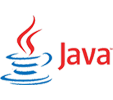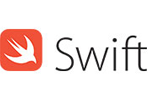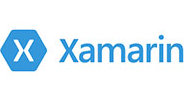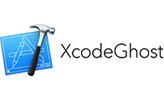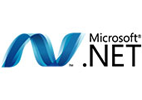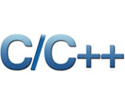Why international partnerships make strategic sense for Canadian startups

On the surface the decision often looks financial—lower hourly rates offshore. But the benefits go far beyond price. International app development partners bring scale, speed, complementary expertise, and operational maturity that many early-stage Canadian teams lack.
Top business drivers
- Cost efficiency: Reduce development spend to extend runway.
- Faster launches: Shorten time-to-market with parallel workstreams.
- Access to expertise: Tap specialists in AI/ML, cloud, payments and cross-platform frameworks.
- Scalability: Ramp teams up or down without long local hiring cycles.
- Focus on product-market fit: Founders can concentrate on customers, strategy and growth.
How Canadian startups typically engage international partners
There are three common models Canadian startups use to collaborate with international development teams:
1. Dedicated Team (long-term)
An offshore dedicated squad works exclusively on your product and integrates with your Canadian product managers. This model is ideal for startups with ongoing feature roadmaps.
2. Fixed-Price Projects
Use this for well-scoped projects (an MVP or a single feature). Fixed-price contracts give budget predictability, though they require thorough scoping up front.
3. Time & Material (T&M)
This flexible model suits iterative development where scope evolves based on user feedback and testing.
Cost comparison — Canada vs India (indicative)
The table below provides ballpark rates to help Canadian founders budget. Actual rates vary by vendor, experience level and city.
| Role / Service | Typical Canada Rate (CAD / hour) | Typical India Rate (CAD / hour) | Estimated Saving |
|---|---|---|---|
| Mobile Developer (mid) | $120 – $180 | $30 – $60 | ~60–75% |
| Senior Engineer / Architect | $160 – $250 | $50 – $110 | ~60% |
| UI/UX Designer | $90 – $150 | $25 – $60 | ~50–70% |
| QA / Test Automation | $80 – $130 | $20 – $50 | ~60% |
Time zone table — Canada & India (practical overlap)
Overlap windows are useful for standups, reviews and handoffs. Use them strategically.
| Canadian City | Time Zone | Typical Work Hours | Daily Overlap with India (IST) |
|---|---|---|---|
| Toronto / Montreal | EST (UTC -5) | 09:00 – 17:00 | ~3–4 hours (evening IST) |
| Vancouver | PST (UTC -8) | 09:00 – 17:00 | ~1–2 hours — limited overlap |
| Calgary | MST (UTC -7) | 09:00 – 17:00 | ~2–3 hours overlap |
Hidden (strategic) benefits beyond cost
Founders quickly discover benefits that go beyond lower hourly rates.
Round-the-clock progress
With a reliable mobile app development company in India, you can adopt a "follow-the-sun" workflow: Canadian PMs define work during their day, offshore teams make progress overnight, and Canadian teams review results the next morning — shortening cycle times.
Access to niche skills
India’s developer ecosystem produces specialists in cross-platform frameworks (Flutter, React Native), cloud-native backends, AI/ML, and payments integrations — areas where many Canadian startups need short-term expert help.
Operational maturity
Established offshore vendors bring hardened processes (Agile, CI/CD, test automation, incident management) that help startups move from prototype to production-grade faster.
Industries where Canadian startups benefit most

- FinTech: mobile wallets, merchant payments, KYC flows (ensure PCI and local compliance)
- HealthTech: telemedicine, appointment platforms (attention to PIPEDA / PHIPA)
- E-commerce / Retail: marketplaces and logistics apps
- EdTech: learning platforms and mobile classrooms
- Transportation & Mobility: routing, dispatch, and real-time tracking
Key technologies often outsourced
- Cross-platform mobile: Flutter, React Native
- Native development: Swift (iOS), Kotlin (Android)
- Backend: Node.js, Python (Django/Flask), Java / Spring
- Cloud & DevOps: AWS / GCP, IaC (Terraform), CI/CD
- Data & AI: TensorFlow, PyTorch, recommendation systems
How to choose the right international partner
Not all partners are equal. Here’s a practical checklist for Canadian founders:
1. Industry & regional experience
Prefer partners with experience integrating Canadian payment rails, regulatory requirements (PIPEDA, provincial health rules), and with references from North American clients.
2. Technical depth
Ask for code samples, architecture documents, and demo apps. Evaluate their approach to testing, security, and scaling.
3. Communication & overlap plan
Confirm English proficiency, a clear overlap schedule and nominated contacts (project manager, technical lead) available during your overlap hours.
4. Legal & security
Require NDAs, Data Processing Agreements (DPA) aligned with PIPEDA, IP assignment clauses and clarity on data residency where necessary.
5. Start small with a pilot
Run a 4–8 week paid pilot to validate delivery, communication, and quality before scaling to a larger engagement.
Common mistakes Canadian startups make — and how to avoid them
Mistake #1: Choosing solely on price
The lowest bid often leads to rework and timeline slips. Prioritise track record, communication and technical fit over the cheapest hourly rate.
Mistake #2: Vague scope & acceptance criteria
Clear user stories, wireframes, and acceptance tests prevent scope creep. Attach payments to milestones and demos to align incentives.
Mistake #3: Neglecting governance
Establish a cadence (daily standups during overlap, weekly demos, monthly roadmap reviews) and a single product owner to keep priorities consistent.
Sample cost table for a typical MVP
Estimated totals—use as planning references. Currency: CAD.
| Deliverable | Typical Canada Cost | Typical Offshore (India) Cost | Notes |
|---|---|---|---|
| Design (UI/UX) | $8,000 – $15,000 | $3,000 – $6,000 | Includes user flows, prototypes |
| Core App (iOS + Android, MVP) | $60,000 – $120,000 | $20,000 – $45,000 | Depends on integrations & complexity |
| Backend & APIs | $20,000 – $50,000 | $8,000 – $20,000 | Cloud setup, auth, data models |
| QA & Security Testing | $8,000 – $18,000 | $2,500 – $6,500 | Automated + manual testing |
| Maintenance (12 months) | $4,000 – $10,000 / month | $1,200 – $3,000 / month | Support, minor enhancements |
Onboarding & collaboration best practices
- Prepare concise product context: personas, primary journeys, KPIs (DAU, retention, conversion).
- Create clear user stories and acceptance criteria for the pilot phase.
- Establish tools: Jira (issues), Confluence/Notion (docs), Slack/MS Teams (communication), GitHub/GitLab (code), CI/CD (deploys).
- Schedule daily standups during overlap hours and a weekly demo for stakeholders.
- Define security controls, backups, and incident response expectations.
Real-world example (concise)—Toronto-based health startup

A Toronto healthtech founder needed a HIPAA/PIPEDA-aware telemedicine MVP. Local quotes were high and timelines long. The startup partnered with a vetted app development company in India that had prior health vertical experience. Outcome:
- Delivered HIPAA-like controls and guided PIPEDA alignment.
- MVP shipped in 10 weeks (vs 20–24 projected locally).
- Development cost reduced by ~50% enabling an extended marketing runway.
Measuring success — the metrics that matter
- Cycle time: ticket creation → production deploy
- Defect density: defects per 1,000 lines or per sprint
- Uptime & SLA adherence
- User metrics: DAU, retention, conversion
Final checklist before you sign
- Run a paid pilot (4–8 weeks) to validate delivery and fit.
- Confirm DPA, NDA and IP assignment clauses are in place.
- Agree on SLAs, response windows and support model.
- Define measurable acceptance criteria and milestone payments.
- Plan for knowledge transfer and gradual ownership handover if needed.
Closing thoughts
For Canadian startups, international collaboration—when done thoughtfully—unlocks access to talent, speeds up delivery, and materially reduces cost. A trusted partner, such as a reputable mobile app development company in India, becomes more than a vendor: they’re an extension of your team that helps you move faster, test ideas, and scale. Prioritise strong governance, clear legal protections, and short validation pilots to make the relationship work for your business and for users in Canada.


